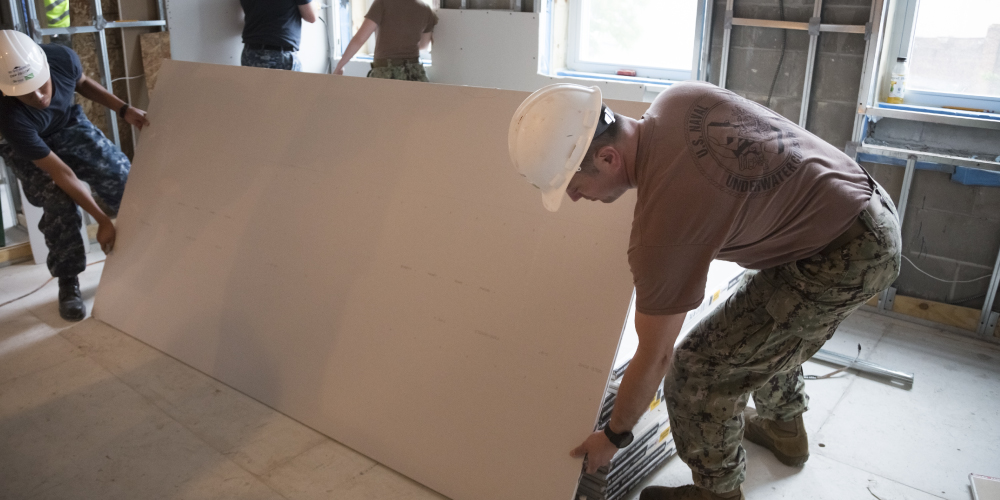
A June 24, 2021, press release from the US House Appropriations Committee detailed the fiscal year 2022 Military Construction, Veterans Affairs, and Related Agencies Appropriations bill, which will fund significant military construction alongside other programs. The bill was passed on August 5, 2021, by the Senate Appropriations Committee by a 25-5 vote.
According to the release, the bill provides a total of $10.9 billion for military construction — an amount that’s $2.9 billion above the 2021 level and $1.07 billion above the amount originally requested by President Biden. In total, the bill includes $124.4 billion in funding for the various programs included.
The release claims that the bill focuses on construction in a number of sections, with a focus on “[rebuilding] our infrastructure with strong investments to construct critical facilities on military installations including family housing and child care centers, and build, repair, and retrofit Veterans Affairs facilities.”
Additionally, construction will also be focused on combating the climate crisis, with the release noting that the funding will go towards construction that “Confronts the climate crisis with increased climate change and resiliency funding to help military installations adapt to rising sea levels and worsening natural disasters.”
“This bill demonstrates a strong commitment to our servicemembers, their families and our Veterans,” said Congresswoman Debbie Wasserman Schultz, chair of the Military Construction, Veterans Affairs, and Related Agencies Appropriations Subcommittee. “It addresses military infrastructure and readiness needs of current servicemembers and provides the benefits and medical care that Veterans duly earned in their service to our Nation.”
Construction opportunities will arise in a number of sectors
The appropriations bill contains a significant amount of funding in a wide variety of construction sectors, with facilities not simply being military-only. Outside of strictly military facilities and infrastructure, the plans call for work that would appeal to contractors working in housing, energy, transportation, and renovations and repair.
The detailed spending allocated in the bill includes:
- $213 million for Child Development Centers — which includes $33 million for planning and design of future facilities
- $1.423 billion for family housing
- $849.2 million for construction or alteration of Guard and Reserve facilities in states and territories
- $205.8 million for the NATO Security Investment Program, which provides funding “for infrastructure necessary for wartime, crisis, and peace support and deterrence operations, and training requirements”
- $564.6 million for Base Realignment and Closure
- $149.8 million for Cost to Complete Projects — which includes $31.5 million for family housing construction
- $162.9 million for Natural Disaster Recovery Construction
- $100 million for the Army National Guard transformation plan to accelerate construction of national guard facilities and $50 million for planning and design towards future work
- $550 million for Barracks for Unaccompanied Soldiers
- $100 million for Climate Change and Resiliency Projects
- $475 million for Shipyard Infrastructure Optimization Plan projects

Individual facilities are looking forward to improvements following the bill’s announcement
Beyond the improvements suggested nationally, individual facilities are already expecting to see the bill send funding its way, and congressional representatives have taken notice.
US Senator Raphael Warnock, who represents Georgia, noted the impact the bill would have on Georgia’s military bases, as it includes a $165 million investment for the state’s military infrastructure. The bill appropriates a significant amount for the state’s Fort Gordon, which serves as the current home of the United States Army Signal Corps and United States Army Cyber Command.
Specifically, the bill includes $69 million for “modernization and revitalization efforts…to construct a cyber instructional facility,” with a further $3.67 million intended for planning and design to “modernize the Fort Gordon’s signal schoolhouse and construct a cyber and communications network training facility.”
US Senator Martin Heinrich, a representative for New Mexico, similarly focused on the impacts that the bill will have on his state’s facilities, echoing other statements in saying “The bill provides a significant increase in funding for military construction and family housing, and supports the Department of Defense to increase its energy and climate resilience.”
Heinrich further detailed that the bill included “major investments to ensure [that] Armed Forces based in New Mexico are equipped with the state-of-the-art technology, facilities, and resources needed to complete their missions.”
US Senator Cindy Hyde-Smith, who represents Mississippi, noted that her state has been waiting for the bill’s funding for a while, welcoming the news of its passage.
“The Senate MilCon-VA bill would fund several Mississippi projects that have been on the drawing board for a while, all of which are designed to improve the operational efficiency of the military units working and training in our state,” Hyde-Smith said.
Mississippi will receive $70.4 million in improvements for the Camp Shelby Joint Forces Training Center and Jackson International Airport — yet another example of recent airport construction taking off.
These improvements similarly offer a large range of opportunities to varying construction sectors, as well, with energy serving as a major focus: $46 million was appropriated towards construction of a 10-megawatt natural gas generation plant, a micro grid control center, and electrical distribution infrastructure at Camp Shelby.